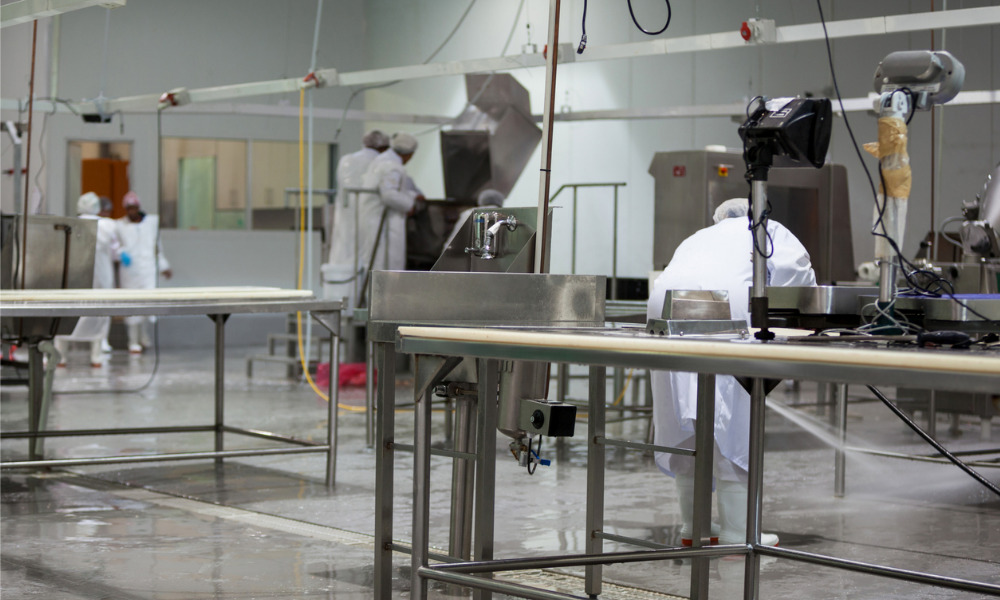
Case explores the importance of implementing precautionary measures against workplace risks

The Supreme Court of Queensland recently dealt with the case of a worker who sued his employer for allegedly failing to provide a safe work environment after an employee sustained injuries attending to a workplace emergency outside operating hours.
According to the Supreme Court’s decision, the worker said that although his accident happened outside the regular operating hours, the workplace problem warranted a sense of urgency. In its defence, the employer argued that there was contributory negligence by the worker in accessing the workplace area outside working hours and that there was no violation of duty on the company’s part.
Following the employer’s argument, could the worker’s injury, obtained after working hours, still be part of the employer’s responsibility?
The employee worked at a meat processing plant in 2015 owned by Greenmountain Food Processing Pty Ltd. The worker was 32 years old at the time of the accident and was the plant’s maintenance manager.
His duty as the maintenance manager required him to “manage a team of employees, delegate tasks and ‘make repairs and upgrades in the most efficient and cost-effective way,” the court decision said.
“A key responsibility was to maintain all facility and manufacturing assets,” the court said. “Another was to diagnose breakdown problems, and he had to plan and ensure repair and installation activities.”
Around 5pm on 12 June 2015, the worker was driving home past the meat processing plant when he noticed plumes of steam emitting from a malfunctioning relief valve. According to the court, the whole plant largely depended on the boiler operating.
Hence, the worker went to the rendering shed to investigate which pipes were leaking. At this time, he was also on the phone with the contractor, whom he informed about the leak and who would address the problem in the coming weekend.
“Many years earlier, and contrary to his advice, the Rendering Manager had arranged for some alsynite sheeting to be installed where a leaking pipe had rusted a hole in the metal roof of the rendering shed,” the court said. “The idea was to stop the rust from getting worse. Alsynite is a polycarbonate product that can be used as a roofing product.”
Although the worker knew that there was some Alsynite on the roof, he did not think that he was walking in the vicinity of the Alsynite, which was a product that was not appropriate for weight-bearing.
As the worker’s attention was mainly on examining the leak, the worker walked onto the Alsynite and dropped more than seven metres to the concrete floor of the rendering shed.
The worker did not die but was severely injured, suffering a skull fracture and a moderate brain injury.
“He was knocked unconscious and lay on the floor of the deserted shed,” the court said. “Eventually, he regained consciousness and managed to drag himself outdoors.”
After receiving entitlement through a statutory worker’s compensation claim, the worker sued his employer due to the latter’s negligence, which he believed mainly contributed to his injuries.
According to the court, the employer argued that it could not have foreseen that one of its employees would attend to the rendering shed. Hence, there was no breach of duty on Greenmountain’s part.
The employer also said that the worker had been negligent in accessing the roof outside his work hours and in failing light, all while speaking on a mobile phone.
The employer also noted that before the incident, the worker had consumed two alcoholic beverages while meeting his friend.
It further said that access to the roof was not generally required by staff and the worker was aware that the roof had Alsynite panels, but was not able to see those panels.
Despite the employer’s contention, the Supreme Court favoured the worker and found that the employer violated its duty of care, and such a breach led to his severe injuries.
“The better view is that this is a case of a worker who did not disobey a direction, and who was acting under pressure,” the court said.
It also noted that the worker had been preoccupied for understandable reasons in assessing where the leaking steam came from and should not be found to have been guilty of contributory negligence.
In light of using his mobile phone before the incident, the court found that the worker was merely following instructions from an expert in the field and was using his phone to provide reports. Hence, his holding of the phone was also deemed understandable.
The court also said that the employer could have made precautionary measures against workplace risks, such as training, safe work rules when working at heights, or obvious warning signs placed at the entry of the roof — none of which had been made.
Ultimately, the court found that the worker’s action was driven by a reasonable sense of urgency and awarded the worker a total of $967,383 by way of common law damages.